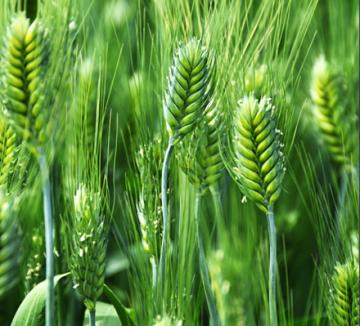Quantifying the Impact of Changing Climate Conditions on Elite Wheat Variety Performance

Conducting variety testing trials helps to select the best-performing variety across environments. Meanwhile, the profound impacts of changing climate were captured in performance data from long-term testing trials, which are an invaluable resource to “learn from the past, prepare for the future”. Inspired by well-established genetic analytics, such impacts can be dissected into major climatic variants by CERIS, an approach parallel to QTL/GWAS, and predicted by Enviromic Prediction parallel to Genomic Selection. Photo courtesy of Zhiwu Zhang, Washington State University.
Climate change and the associated instability in weather patterns present a growing challenge to sustainable food production. Environments are constantly changing, making adaptation a must for crops.
Adaptation and productivity are affected by the complex interplay between genes and environment, making in-depth functional analysis of genetic pathways much more challenging. Recently, ARS research biologist Xianran Li and collaborators proposed that well-established genetic approaches could be leveraged to systematically evaluate the impact of changing climatic conditions on crops.
For understanding the relationship between environment and performance, individual environment is the research subject. Trait values among individual environments vary. Through experiments (such as long-term variety testing trials) and analytics, trait variation among environments were attributed to major environmental conditions. With such understanding, in the future researchers can management practices for certain environmental conditions to achieve desired traits.
“The initial purpose of this research is to understand and predict the wheat falling number problem,” said Li. Falling number is a critical wheat quality trait. The term refers to a test for increased alpha amylase activity, an enzyme, which when present, can significantly reduce grain quality. “Low trait value causes hundreds of millions of dollar loss annually and impacts multiple facets in the food chain.”
Falling number trend varies year by year and location by location, suggesting the important role of the environment. Through repurposing available historical records from long-term wheat variety testing trials, Li’s research identified a major climatic condition inducing low falling numbers for that region, and developed a predictive model to forecast falling number trends based on weather conditions.
“With this success, we then included other important traits, including yield, from this long-term variety testing trial,” Li said.
From studying multi-environmental trials, Li learned that varied environmental conditions are the major contributor to the observed phenotypic variation.
To understand trait variation from this multi-environment trial, the classic genetic principle partitions the phenotype into two unique terms, environment and genotype. The genetic makeup of an organism is called a genotype and the observable traits are called phenotypes. Usually, the focus is on the relationship between genotype and phenotype. The goals are to identify the main genes giving the trait value difference, and to predict the expected organism performance by using genomic information. For most quantitative traits like body size, shape, weight and aspects of coloration, environments explained a large portion of phenotypic variations.
By developing the critical environmental regressor through the informed search (CERIS) model, Li and his colleagues created a framework to dissect the phenotypic variation of complex genetic traits observed in natural field conditions by identifying and leveraging explicit environmental measures.
Additionally, by combining CERIS and the genome-wide association study strategy, Li and collaborators were able to unveil the architecture of phenotypic plasticity, which allow a given genotype to produce different phenotypic values in response to distinct environmental conditions.
The CERIS algorithm is a first step in the predictive modelling that Li mentioned. The idea is CERIS finds an explicit environmental index highly correlated with an environmental mean. An environmental index is defined as an external factor, like photothermal time, which is a product of temperature and hours of daylight time, from a growing period before a trait is developed, thus making predictions for new environments.
Enviromic prediction is the next direction Li hopes to improve by understanding the impact of changing climatic conditions on crops. Understanding the components of genetics helps to improve the genetics to respond well to environment. Understanding the impact of the environmental components helps better placement of the genetics and prescription for improved performance in the field. This novel concept predicts performance for new environments and is developed in parallel to widely applied genomic prediction, which predicts performance of new crop varieties through whole-genome markers.
“Identifying major environmental conditions in the future will provide a new approach for characterizing and understanding environmental conditions to improve crops,” Li said. “The long-term goal of my research program is to achieve a better understanding of how genotypes and climate conditions impact crop performance. With a better understanding, we can exploit the relationships among genetics, environments, and crop performance to create a better agriculture system.” By Andrew Casas, ARS Office of Communications.

